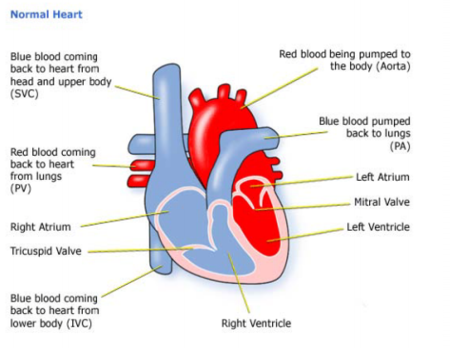Coronary bypass surgery
performed in world class hospitals in India is a procedure to allow blood to
flow to your heart muscle despite blocked arteries. Coronary bypass surgery
uses a healthy blood vessel taken from your leg, arm, chest or abdomen and
connects it to the other arteries in your heart so that blood is bypassed
around the diseased or blocked area. After a coronary bypass surgery, normal
blood flow is restored. Coronary bypass surgery is just one option to treat
heart disease.
Just like all the other organs in your body,
your heart needs blood and oxygen to do its job. Coronary arteries snake across
the surface of your heart, delivering a constant supply of blood and oxygen to
the heart muscle. When one or more of these arteries become narrowed or
blocked, blood and oxygen are reduced and heart muscle is damaged. Coronary
bypass surgery can minimize this damage.
Today
Cardiology treatment in India has come up as a suitable option in order to get
rid of any of the heart defects as the cost in India of any of the treatments
is the best and that too at rates which are absolutely affordable. Because of
these benefits of choosing in India, any of the treatments, many foreigners
have come down here in order to solve their trouble of heart diseases.
Who Should
Consider Coronary Artery Bypass Graft Surgery?
- People diagnosed with arterial blockage or
heart damage are recommended with the Coronary Artery Bypass Graft
Surgery.
- People suffering from severe chest pain or
angina due to the arterial blockage are recommended with the Coronary
Artery Bypass Graft Surgery.
- People suffering from complicated conditions such as diabetes & high blood pressure are recommended the Coronary Artery Bypass Graft Surgery to reduce the risk of heart attack.
Procedure
for Coronary Bypass Surgery
During a Coronary Artery Bypass Graft Surgery
(CABG), the blood flow is re-routed around the clogged artery by detaching a
long segment of an artery from the chest wall, arms or leg veins. Thereafter,
the new artery is grafted to the clogged area of the coronary artery. Through
the newly attached channel, blood gets unhindered route to flow to the heart
muscles. This procedure is known as Coronary Artery Bypass Surgery. Depending
upon the number of blocked coronary arteries, a patient may undergo more than
one bypass graft.
What to Expect
After Coronary Artery Bypass Graft Surgery?
After surgery, there will be a short stay (1 to 2 days if there are no
complications) in the intensive care unit (ICU). In the ICU, you will likely
have:
·
Continuous monitoring of his or her heart activity.
·
A tube to temporarily help with breathing.
·
A stomach tube, to remove stomach secretions
until the person starts eating again.
·
A tube (catheter) to drain the bladder and measure urine output.
·
Tubes connected to veins in the arms (intravenous, or IV, lines) through
which fluids, nutrition, and medicine
can be given.
·
An arterial line to measure blood pressure.
·
Chest tubes, to drain the chest cavity of fluid and blood (which is
temporary and normal) after surgery.
Benefits of
Coronary Artery Bypass Graft Surgery
Some of the potential benefits of Coronary Bypass
Heart Surgery (CABG) include :
- Lower risk of stroke
- Lower death rate
- Less need for transfusion
- Less heart rhythm problems
- Less injury to the heart
FAQ's - Coronary Artery
Bypass Graft Surgery in India
Coronary Artery Bypass Graft Surgery is amongst the lowest in the world. The Coronary
Artery Bypass Graft Surgery is about 20% of the cost in the USA. The
low Coronary Artery Bypass Graft Surgery is without any
compromise on quality or success rate
Are cardiac surgeons in India well qualified to
perform heart surgeries?
Teaching hospitals in India are of a high standard.
Further, many cardiac surgeons and cardiologists from India have had further
education/training abroad at top class medical schools and hospitals. The
result is a very high level of academic excellence amongst cardiologists and
cardiac surgeons in India.
How experienced are cardiac surgeons in India at
handling complex heart surgeries?
The translation of academic excellence into
outstanding medical results happens only with practice and experience. Indian
doctors acquire a great amount of experience over a very short period of time
because of the large number of patients requiring cardiac treatment in India.
Do surgeons perform advanced heart surgeries in
India?
Cardiac surgeons in India are experts at performing
advanced procedures like Heart Transplants, Robotic Cardiac Procedures, Totally
Endoscopic Coronary Artery Bypass Surgery (TECAB), Minimally Invasive Direct
Coronary Artery Bypass Grafting (MIDCAB), Off-Pump Coronary Artery Bypass
Grafting (OPCAB), complex mitral valve repairs, etc.
What success rates can one expect in India from
cardiology hospitals?
It is quite amazing that Indian hospitals are able
to offer a combination of extremely low cost cardiac treatment in
India along with extremely high success rates as well. In fact,
leading hospitals for cardiac treatment in India have success
rates in excess of 98%, which is absolutely world-class.
Get a free of cost second opinion from renowned surgeons within 24 hours.
For further information or free consultation, we
request you to fill in inquiry form on the website and send medical reports to free@mymedopinion.com. MyMedOpinion assures you that all arrangements for examinations,
surgeries, and post-operative recuperation will be ably taken care of you
Get the MyMedOpinion Advantage
MyMedOpinion help by its expertise and speed and quality of response. From
arranging opinion from India's best cancer hospitals, hospital appointment
bookings, travel and hotel accommodation, we manage our patient’s needs
efficiently.
·
Quick responses… Within 24-hours
·
World class results for treatment
·
Cancer specialists with great qualifications and experience
·
Assistance to Plan your Travel and Apply for India visa.











 Improving your quality of life and reducing angina and other CHD symptoms
Improving your quality of life and reducing angina and other CHD symptoms

